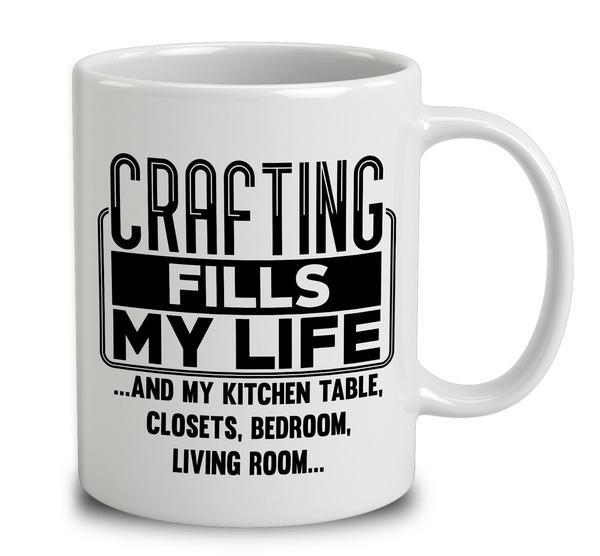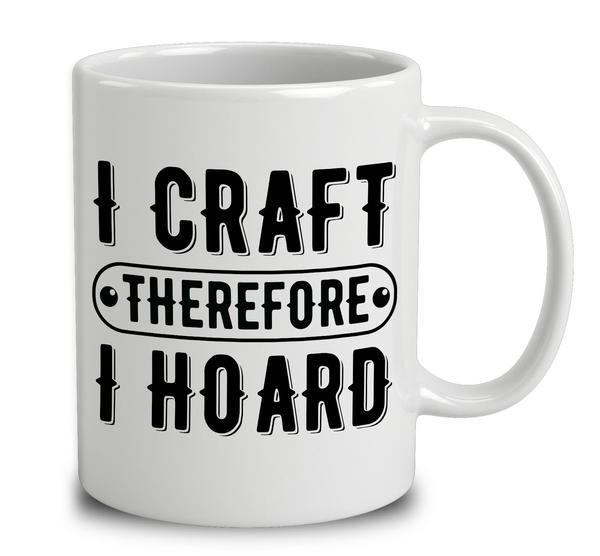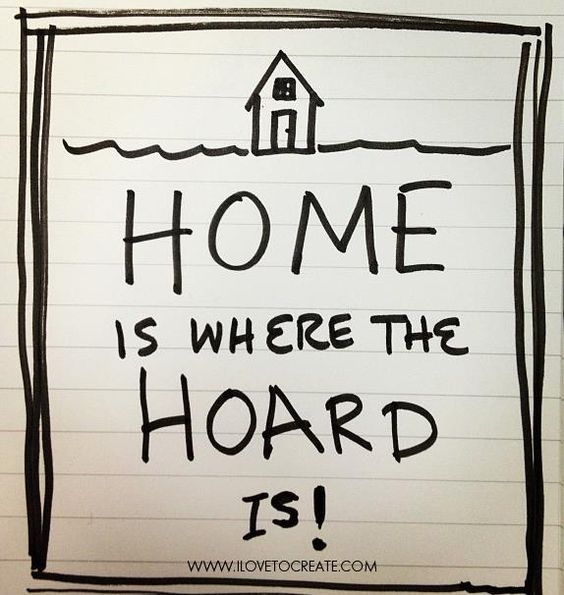Contemporary Hoards
One of the most significant examples of contemporary hoards, which often borders the line between collecting and hoarding, is related to crafters, especially quilters, who maintain large stores of extra materials. Rather than being collectibles, trash, and other useless items, quilters hoard utilitarian materials which may be of use for future projects. As Marybeth C. Stalp observes, “A typical American quilter today is a middle-aged, middle- to upper-class woman…,” which parallels the demographic most likely to be a hoarder. Stalp notes that quilters’ collections are regularly referred to as the “fabric stash,” and that the quilters hoard their stashes over time. Her study’s main finding is that collecting, hoarding, and hiding the stash in the home is a normal activity for hobbyists but considered deviant by others, especially those with whom they share a living space.
Another of Stalp’s assertions is that “Having a stash legitimates women’s claims in identifying themselves as quilters and pursuing a leisure activity independent from the family institution.” In this way, the activity becomes a central aspect of the woman’s identity. This can also be seen in relation to the fabric stash itself, which takes on a sentimentality and attachment: numerous subjects in Stalp’s study mentioned being afraid that their collections would be thrown away if they died, and wanted them to go to people who would appreciate them. Thus, quilters and their stashes are so deeply connected that the quilter envisions its future after her own death based on the relationship that she had with it in life.
On perhaps a smaller scale than that experienced by hoarders, quilters experience shame and embarrassment at having their stashes discovered by husbands and family members. Stalp observes that “The fabric hoarding of women quilters comes into question when their families challenge the need to have so much fabric collected that is not being used up to make quilts.” This reveals how quilters perceive the lack of support in addition to the deviant stigma surrounding women’s leisure activity. While fabric stashes generally are confined to one contained closet or room in the home and do not meet the extent of a full hoard’s domination of one’s personal space, fabric hoarding exhibits similar qualities to the identifiers of HD and thus represents an additional activity that could support the disorder’s behaviours.
Above all, Foster recognizes hoarding as a “pathology of capitalism,” which is perpetuated by television and other media. Commenting on the television show Hoarders, she observes the constant emphasis that HD is “a mental illness supposedly suffered by only a small percentage of Americans,” and the use of TV psychologists and clutter experts who usually fail to “cure” the hoarders. Foster argues that “…mental illness is invoked not only in order to in order to pathologize the disgusting hoarder, but more importantly, it is used to affirm the normalcy of bourgeois gluttony and consumption.” By watching such clearly demarcated examples of consumption gone awry, viewers feel morally superior in their own spending and living habits through the show’s insistence that hoarding is a “psychological problem of a few freaks that can be fixed.”
In addition, Foster argues that hoarding shows “formulaically depend upon shocking and repetitive ‘reveals’ of fecal matter found among the hoards;” whereby the fecal matter acts as an ‘othering’ device. These alarming shots of the results of hoarding satisfy viewers’ thrill-seeking interest in the shows, but, significantly, Foster observes that such programs never actually portray the hoarders’ acts of consumption that led them to such conditions. She argues that this is because doing so would allow the audience to identify with the hoarder through acts of acquisition that are normal elements of everyday life when experienced in moderation. Foster asserts that “No matter how bad off we are, no matter how bad our credit, our compulsive spending, our fiscal status, above all Hoarders makes the viewer secure in the knowledge that they are most assuredly not fecal matter and living in toilets.” Such programs are thus designed less to generate familiarity with hoarding disorder and combatting its stigma and more to reassure and reinforce its respectably-consuming viewers.





